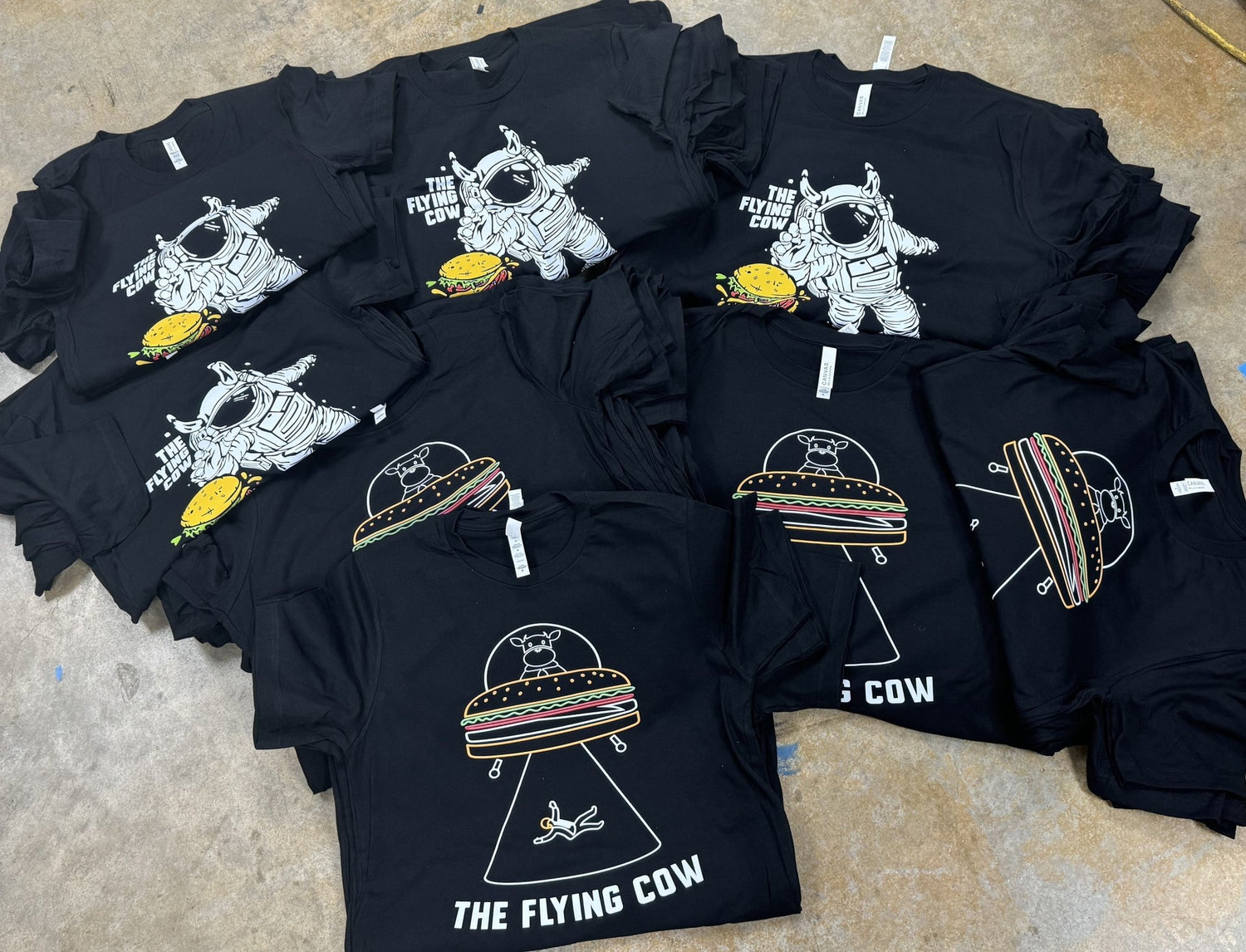Breaking Down Cost Components
The price of a custom printed shirt starts with material costs—fabric quality, shirt style, and brand affects the base price. Next comes the printing method: screen printing is cost-effective for large orders but has upfront setup costs, while DTG is ideal for small runs but has a higher per-unit price. Add-ons like specialty inks (metallic, glow), custom labels, or branding tags add to overall cost. SOYT Printing helps clients balance shirt quality and print method, giving a clear breakdown so you understand how each choice affects your bottom line.
Pricing by Quantity and Volume Discounts
Your cost per shirt drops as order size increases due to setup and labor efficiencies. For example, printing 12 shirts might cost significantly more per shirt compared to an order of 100. Volume pricing levels become especially relevant for screen printing, where ink setup and screen-making are split across shirts. At SOYT Printing, we offer transparent tiered pricing and guide you to choose the most economical order size for your needs—saving you money without sacrificing quality or design flexibility.
Setting Your Retail or Markup Strategy
Once your costs are clear, determine the right markup for your business model. Retail markups typically range from 50–100% depending on target market and brand position. Branded or premium tees can charge more, while event or promotional shirts might have a modest markup. Include packaging, shipping, and handling to ensure you don’t underprice for convenience and logistics. SOYT Printing can supply cost estimates based on your design, quantities, and fabric choice, helping you set competitive prices that support growth and profitability.
Want help crafting a pricing strategy for custom shirts?
Call 346‑658‑7354 or email sales@showoffyourthreads.com and SOYT Printing will help you build custom kit pricing plans.
Explore pricing tools at www.showoffyourthreads.com.

